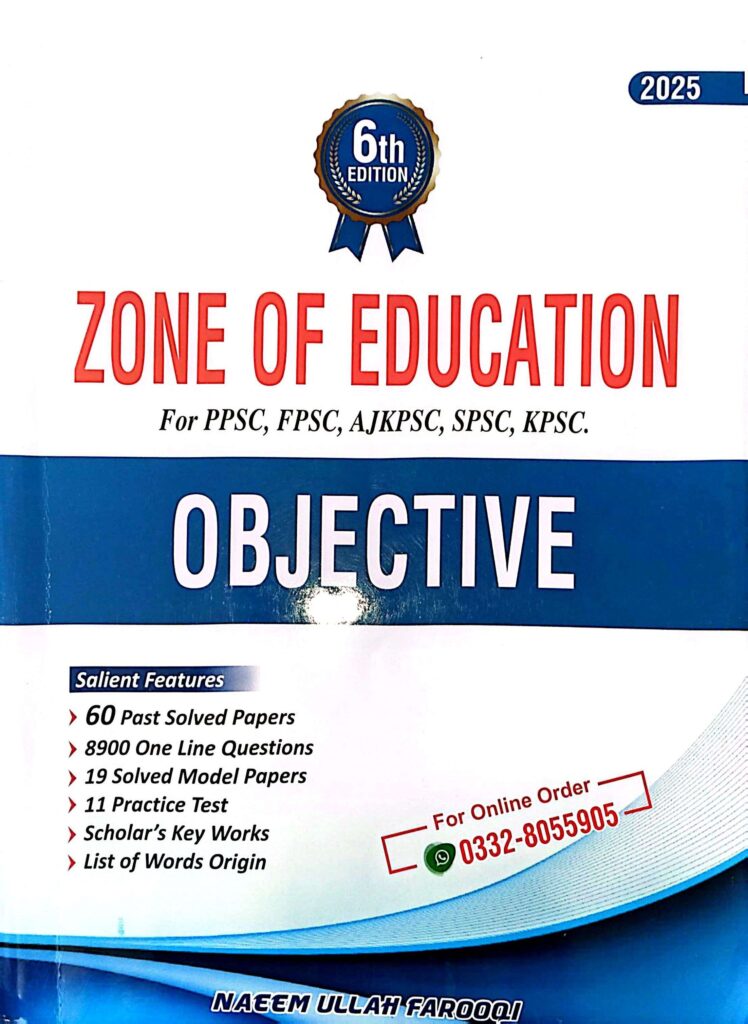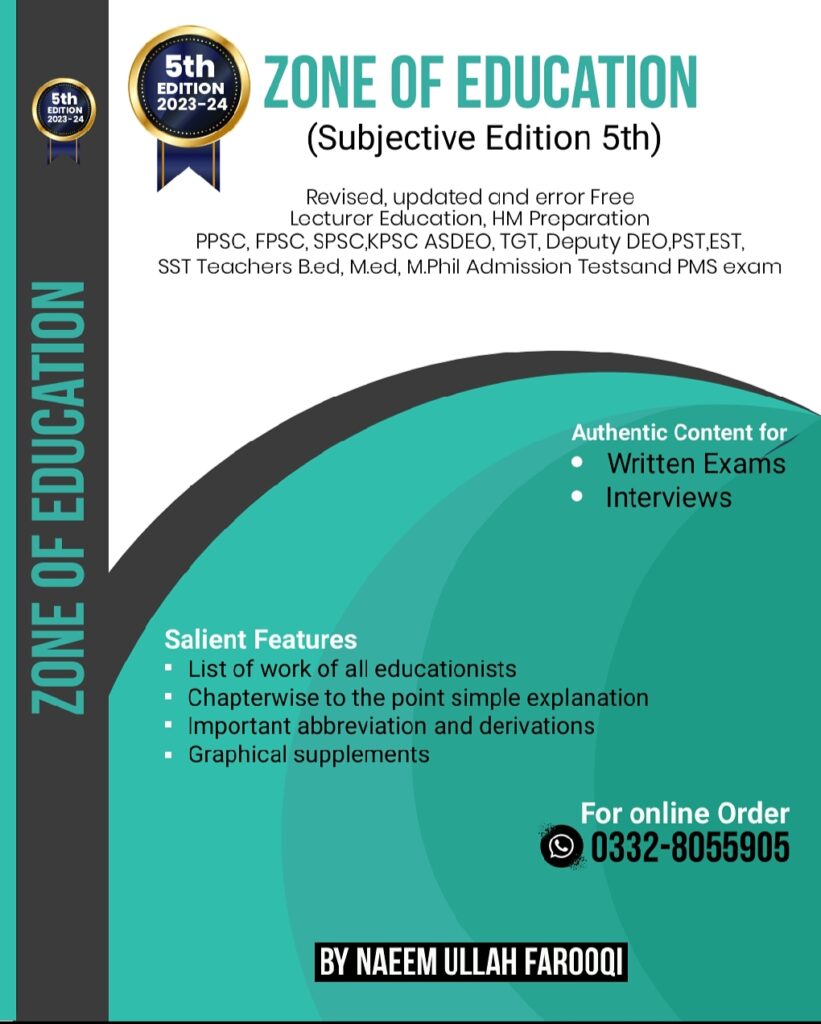GENERAL METHODS OF TEACHING
1. A teaching aid proves effective only when
(a) it is presented before the above average group of learners
(b) it suits the interest of the learner
(c) it is presented before the backward learners (d) it suits the teaching objectives
2. According to the principle of selection, a teacher should take care of
(a) the opinion of his colleagues
(b) the appropriate and wide selection of audio-visual material
(c) the assessment of the pupils
(d) (d) the selection of learners
3. The teacher should be fully aware of the nature of the teaching aid and the way it is to be used for
(a) final examinations
(b) showing his knowledge to the learners
(c) the effective realization of the set objectives
(d) proving his efficiency in teaching
4. The principle of preparation demands from the teacher as well as students
(a) learning readiness
(b) good communication skills
(c) a great deal of effort
(d) due pre-preparation on their part for the utilization of audio-visual aid material
5. The principle of physical control requires
(a) great physique
(b) physical fitness
(c) to arrange or handle the necessary details relating to physical facilities and conditions
(d) to maintain healthy lifestyle
6. The effectiveness of an audio-visual presentation can fail if the materials are mishandled. Therefore,
(a) the aids should have specific value besides being interesting and motivating
(b) they should be true and accurate
(c) proper care is to be taken for minimizing such occurrences
(d) they should suit the age-level of the learners
7. Teachers should carefully plan and visualize the use of aid material
(a) to produce effective citizens
(b) after its actual presentation
(c) before its actual presentation
(d) to collect information of the pupils
8. The principle of action demands from the teachers to guide their students in the process of
(a) adjustment
(b) reacting to the audio-visual experience situations in an appropriate manner
(c) facing challenges in higher classes
(d) getting employment in the future
9. While selecting teaching aids, the principle of appraisal demands
(a) continual evaluation of both the audio-visual material and accompanying techniques
(b) wide selection of audio-visual material
(c) due pre-preparation for the utilization of audio-visual material
(d) appropriate presentation of the material
10. For the realization of better results with audio-visual teaching aids, a teacher should bear in mind.
(a) principle of proper presentation
(b) principle of action
(c) principle of appraisal
(d) the guiding principles of selection of these aids
11. Teaching aids are classified under the following categories:
(a) radio, TV and camera
(b) audio, visual and audio-visual
(c) chalk board and bulletin board
(d) maps and diagrams
12. The aids which help the individuals to learn through listening are known as
(a) audio aids
(b) visual aids
(c) activity aids
(d) audio-visual aids
13. The cheapest and the most easily accessible aid among the audio teaching aids is
(a) television
(b) tape recorder
(c) radio
(d) film
14. Audio teaching aids facilitate
(a) student-teacher relationship
(b) the teaching technique
(c) the seeing function
(d) the listening function
15. Aids through the eye are known as
(a) audio aids
(b) visual aids
(c) activity aids
(d) audio-visual aids
16. Visual teaching aids
(a) enrich the listening functions
(b) enrich the seeing functions
(c) facilitate the audio senses
(d) increase the rate of hearing
17. Map is one of the
(a) audio-visual teaching aids
(b) audio teaching aids
(c) visual teaching aids
(d) activity aids
18. Which of the following aid is the simplest and easiest to use and not expensive?
(a) transparencies
(b) television
(c) cassettes
(d) compact discs
19. Teaching aids which encourage both listening and observing functions are called
(a) booklets
(b) journals
(c) specimens
(d) audio-visual teaching aids
20. The following aids increase the rate of hearing and seeing simultaneously.
(a) sound motion picture
(b) flannel board
(c) diagrams
(d) phonograph
21. Using teaching aids in the classroom
(a) distract the learners
(b) irritate the teacher and the learner
(c) makes learning more interesting
(d) cannot improve student performance
22. The audio-visual aids can be used to realize
(a) the cognitive objective of learning
(b) the affective objective of learning
(c) the psychomotor objective of learning
(d) the cognitive, affective and psychomotor objectives of learning
23. The use of audio-visual aids makes
(a) the lesson boring and uninteresting
(b) the experiences of the pupils meaningful (c) the learners uncomfortable
(d) the pupils lazy
24. If used throughout the entire presentation, visual aids are
(a) more of a distraction
(b) the best motivators
(c) helpful to reduce verbalism
(d) interesting
25. Teaching aids may not prove useful because of
(a) proper preparation
(b) correct presentation
(c) lack of proper planning
(d) appropriate application
26. Modern devices can enrich
(a) student’s performance
(b) teacher’s performance
(c) student-teacher relationship
(d) the classroom learning as well as teaching
27. Audio-visual aids help the teacher in
(a) creating rapport with other teachers
(b) passing time quickly
(c) maintaining the interest and attention of the students in classroom activities
(d) making students occupied with some works
28. The pupils get various opportunities of doing various activities by
(a) writing notes
(b) listening teacher’s lecture
(c) attending classes regularly
(d) using audio-visual aids
29. By using audio-visual aids, the pupils take interest in the development of the lesson and they acquire the knowledge by
(a) doing themselves
(b) making study routine
(c) changing mindset
(d) doing homework
30. Things and difficult ideas which a pupil is unable to understand with chalk and talk, are followed easily by using
(a) internet
(b) audio-visual aids
(c) audio aids
(d) visual aids
JOIN ZONE OF EDUCATIONPK!
Discover the most comprehensive and reliable pedagogy resources in Pakistan, curated for competitive exam success. Our content covers all competitive exam MCQs, including PPSC, FPSC, AJKPSC, SPSC, and more. Designed to empower learners with top-notch material and insights, trust us for your preparation journey!


